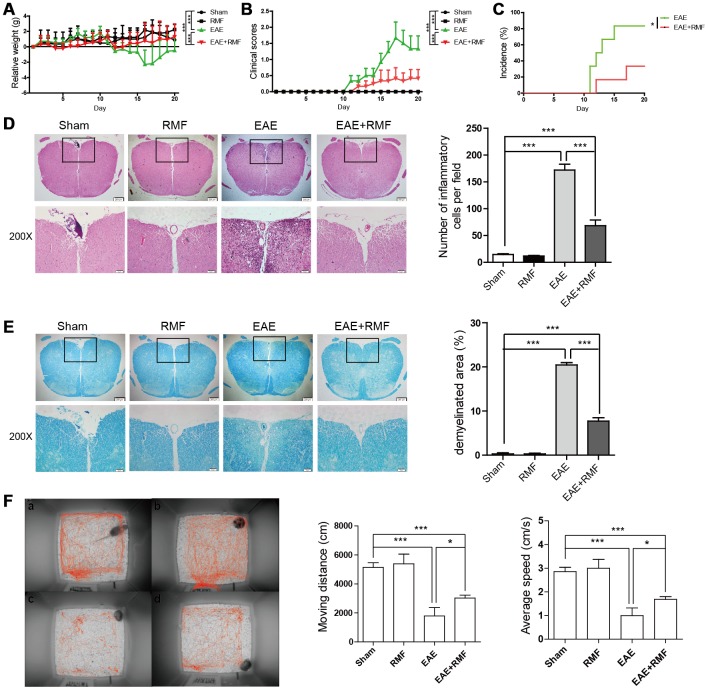Figure 1.
Protective impact of RMF-exposure on the advancement of EAE in mice. EAE mice and C57BL/6 mice were treated daily with RMF or non-RMF starting from day 0 following vaccination. Animals were observed for the clinical indications as well as disease advancement of EAE, comprising (A) body relative weight, (B) clinical scores and (C) the percentage of EAE incidence. (D) Spinal cord sections of the treated mice on day 20 following vaccination by H&E, Scale bar, 200 μm and 50 μm. The graph shows the number of inflammatory cells in per low magnification field (calculated with animal number: control, n = 3; RMF, n = 3; EAE, n = 6; EAE+RMF, n = 6). (E) LFB of Spinal cord sections in both groups on day 20. Scale bar, 200 μm and 50 μm. The graph shows the percentages of demyelinated area in sections (control, n = 3; RMF, n = 3; EAE, n = 6; EAE+RMF, n = 6). On day 20, (F) the behavioral trajectory of mice analyzed by rhythm cage: (A) Control, (B) RMF, (C) EAE, (D) EAE+RMF. Subsequently, we measured moving distance and average speed of mice within 30 min. Data are shown as the mean ± SEM of three independent experiments. *P <0.05, ***P <0.001.

